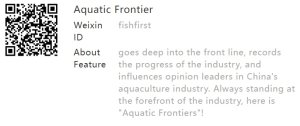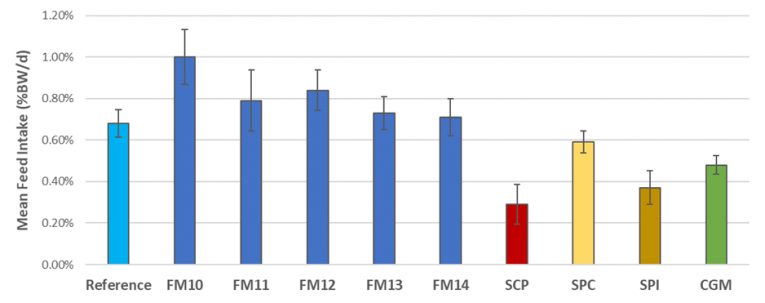 This article was published in FishFirst (China)'s September 2021 edition.
This article was published in FishFirst (China)'s September 2021 edition.
Author: Dr Brett Glencross, IFFO's Technical Director
When we formulate diets using different ingredients, for whatever species we are designing the diets for, it is largely a process of matching the nutrient composition of the ingredient combination with the requirements of the animal we are feeding. Modern linear least cost feed formulation software makes this process relatively simple despite that we are simultaneously formulating for 40+ nutrients for most species these days. However, one aspect of formulation that is somewhat more difficult to use linear formulating software for is how to accommodate the effects that different ingredients have on the palatability of the feed. This aspect of diet formulation requires more experience and knowledge of both the animal and the ingredients, to understand what the animal does and does not like and how to use that knowledge to make a palatable feed.
Some ingredients, despite their excellent nutrient composition profiles, are well known to be poorly accepted by some species. Consider for example the data in Figure 1 which shows some recent data from IFFO work comparing the feed intake by Atlantic salmon in Scotland of different fishmeals against single-cell protein (SCP), soy protein concentrate (SPC), soy protein isolate (SPI) and corn gluten meal (CGM). Without exception the fishmeals each improved the feed intake by the fish relative to the reference diet. In contrast, each of the alternatives decreased the feed intake and can be said to reduce the palatability of the feeds through their inclusion. However, the way in which we assess the palatability effects of an ingredient is also open to interpretation and a range of design constraints. Much of this has to do with the way in which an animal responds to food and which physiological parameters are controlling it at any given time and what senses are used.
Feed intake, over the long-term, in aquatic animals is generally regulated by energy or protein demand combined with the influence of the animals’ endocrine regulatory processes (e.g., ghrelin, cholecystokinin etc) that dominate this control over appetite. However, these factors tend to be the long-term (weeks and months) responses. Formulators can control this effect by ensuring diets are adequately balanced in their nutrient profiles. In the short term (hours and days) though, the animal relies more on its sensory perception to determine what to eat or not to eat. In this scenario, in aquaculture species at least, biochemical cues from the ingredients become important. Those signals that the animal can smell, and taste become critical in defining those rapid responses that drive the short-term feed intake responses. These biochemical cues usually resulting from a range of small, water soluble molecules like amino acids, nucleotides, and peptides.
While the long-term drivers are generally common among the different species, the short-term drivers can be markedly different and as such different species can have different attractant profiles (amino acids, nucleotides, and peptides) that they respond to. Making the process even more complex is that combinations of different chemicals can act in a synergistic manner. As such different species respond better to different cues and this in effect becomes the critical knowledge that formulators must rely on to choose the better ingredients depending on what the feed being formulated is destined for. While there is some public domain data on the palatability responses of different species to different ingredients, most is held as trade secrets by feed companies and formulators across the world. However, it is well known amongst the industry that this is one of the distinct advantages of marine ingredients, in that they have a much more favourable profile of amino acids, nucleotides, and peptides for most animal species and therefore confer significant positive palatability effects.
Putting a value on the palatability responses of the various biochemical combination (the amino acids, nucleotides, and peptides) has been a difficult issue for a long time. Not only are these biochemicals usually more expensive and difficult to measure, but the combinations as mentioned before might be great for one species and not so great for another. Often it is difficult to replace the knowledge that is gained by a simple feeding study with the animal and ingredients of interest and find out which of which makes it a matter of taste.

Figure 1. Mean feed intake (% body weight / d) by Atlantic salmon fed five different fishmeals (dark blue) compared against the reference feed (light blue) used as the basis for all diets and four alternative ingredients when each is added to the diet at the same inclusion level.








